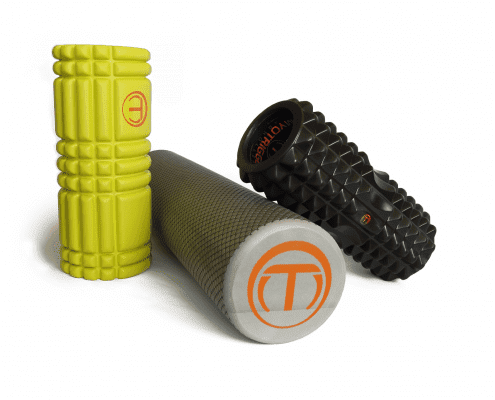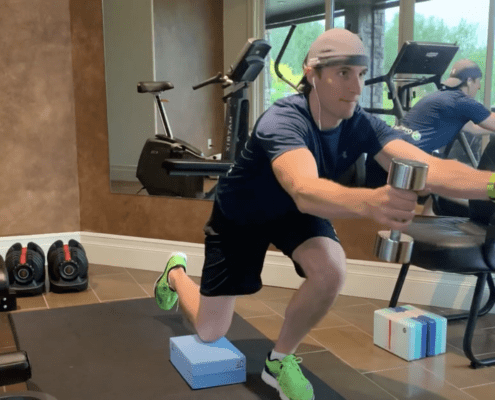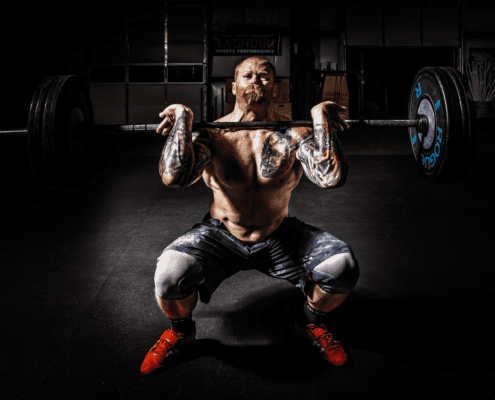Skater Squat: A Great Exercise For Building Balance And Strength
This exercise is not easy. Shown in this clip are different depth variations, using foam block(s) (you can use anything) to go to different depths – the farther you go the harder the exercise.
How to do the exercise: get some sort of “physical thing” (foam/yoga block(s), book(s), etc.) that you can use to work as your stopping point for depth. Also grab a set of dumbbells, 5 – 15 lbs will work. Going above 15lbs is not necessary as the dumbbells just work as counterweight to help you get into the squat deeper and help you balance; going heavier doesn’t make it harder for your legs, it just makes it harder for your shoulders.
Start with shoulder-width stance and have the “physical thing.” just under your hip – or slightly behind it. Start to descend into the squat while simultaneously doing a dumbbell front raise with your palms facing each other. Focus on pushing into the floor with your “triangle foot” (big toe, little toe, and heel) as you descend into the squat. Touch “physical thing” and then push back up, making sure to especially push through your heel and big toe at the same time.
Look to do 6-8 reps per leg, 2-3+ sets per workout. Play around with the height of “physical thing” and look to reduce the height as your strength and coordination improves; if you’re strong enough you don’t need a “physical thing” and you can touch the ground instead.
Most common mistakes to be mindful of:
- letting your heel creep up. Most people do a really poor job of pushing through their heel, in any squat really, this limits your ability to use your glutes properly. Use the dumbbells to help with this to help change your center of mass to allow you to get back further and deeper.
- trying to copy other people’s form. Everyone’s will look a little different, mostly based on your femur length. Those with longer legs, will have to bend their torso more and will likely need to place “physical thing” further back in your stance and really reach forward with their arms while descending into the squat.
- unparallel shoulder and hips. Make sure your hips (belt line) and shoulders are parallel and level throughout the movement. This requires some core activation, and you may not get it right the first time but look to work on getting this right before trying to go deeper (removing “physical thing”).





